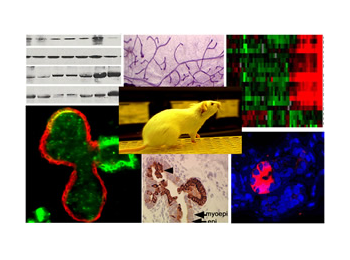
Molecular Mechanisms Underlying Breast Cancer Formation, Cancer Stem Cells, and Metastasis
The Li laboratory investigates the molecular and cellular mechanisms of breast cancer initiation, progression and metastasis as well as cancer immunology. The Li lab has pioneered multiple mouse and rat models of breast cancer that closely mimic human breast cancer initiation and progression. These novel models enable the Li lab to address crucial cancer questions that are otherwise difficult to study, such as early cancer initiation and interactions between mutated precancerous cells and their neighboring normal cells or local microenvironment. Using these models in conjunction with cellular, biochemical, genetic, and omic approaches, they study how oncogenic drivers such as into EGFR-PI3K, JAK2/STAT5, and BCL-xL impact breast tumorigenesis and progression. Their preclinical work on intermittent anti-JAK treatment for preventing breast cancer has resulted in a multi-center window-of-opportunity clinical trial (TBCRC042). Their recent success in introducing oncogenic drivers directly into mammary cells in rats has led to first models that can fully mimic human ER+ breast cancer. They are now utilizing these models to study how ER+ breast tumors evade the immune surveillance and metastasize and survive cancer therapies. Click on Research Projects for detailed introduction to the research projects in the Li lab.
Dr. Yi Li

Dr. Yi Li is a professor in the Lester & Sue Smith Breast Center and the Department of Molecular and Cellular Biology. He received his PhD in 1996 from Michigan State University (MSU) with dissertation research focusing on high mobility chromatin proteins under the guidance of Dr. Jerry Dodgson. For the ensuing one year, he did research on prostaglandin endoperoxide synthases under the advice of Dr. David DeWitt at MSU. In the fall of 1997, he began his cancer research career under the mentorship of Dr. Harold Varmus (NCI and then MSKCC), focusing on mouse models of breast cancer. In late 2002 he completed his postdoctoral training and started his faculty position at BCM.
Lab News
Breast cell survival factor increases breast cancer risk after late pregnancy. View article.









